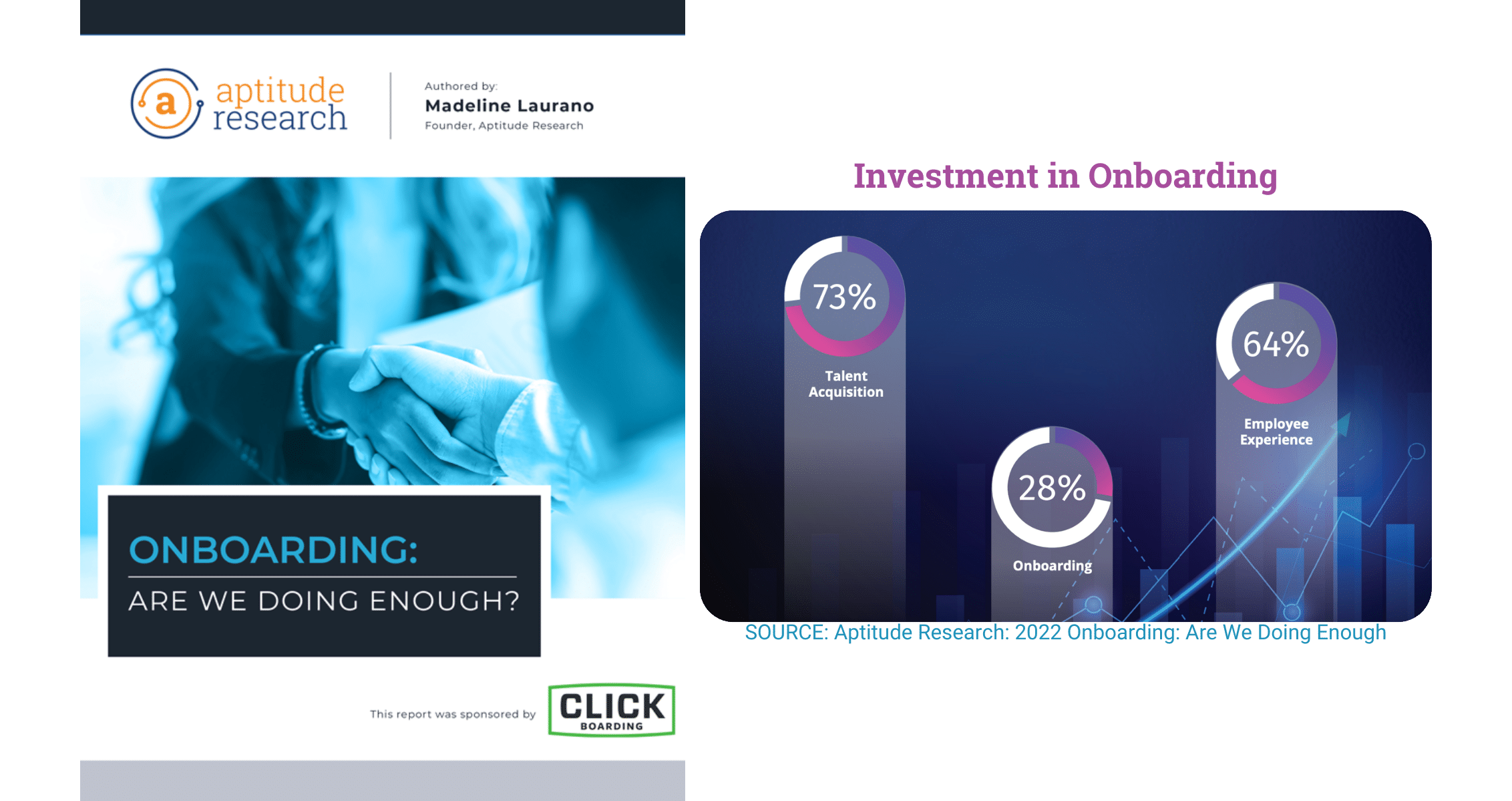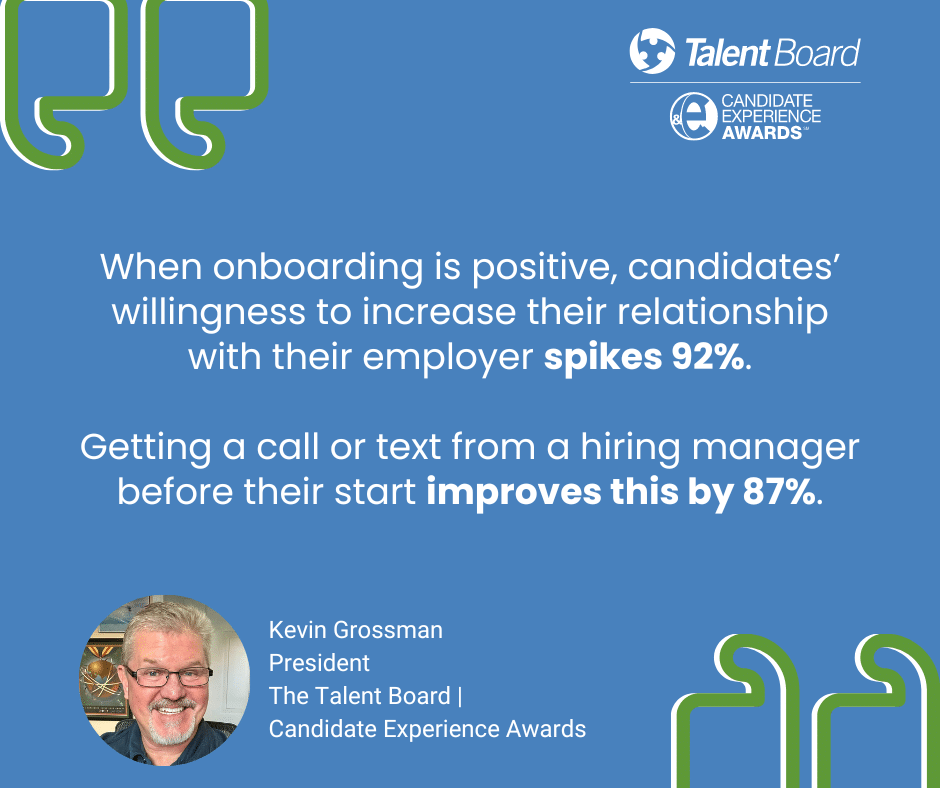In today’s competitive business world, it is crucial to have a talented workforce to succeed. However, attracting top talent is only the beginning. The next critical step is activating workplace talent, particularly during onboarding. It sets the foundation for employee success. By providing a positive and engaging experience, workplaces can help employees feel valued, motivated, and invested in their roles. — leading to higher job satisfaction, retention, and productivity.
Additionally, effective onboarding also helps current employees who may have moved into new roles within the organization. Overall, investing in onboarding can have a significant impact on an organization’s bottom line and long-term success.
What Is Onboarding?
Onboarding is the process of integrating employees into an organization at all stages of the employee lifecycle. Whether new-hire or continuous onboarding, it involves orientation, training, and providing employees with the necessary tools and information to be successful in their roles. The goal is to make sure emplyees feel welcomed, informed, and prepared to contribute to the organization’s mission and goals.
Why Is Onboarding Important?
Founder of Aptitude Research, Madeline Laurano, recently published research on the importance of onboarding.
====
“Eighty-six percent (86%) of employers believe that new hires decide to stay at a company in their first 90 days. Yet, companies are twice as likely to invest in talent acquisition and employee experience than onboarding, and 42% do not have a dedicated onboarding solution”
Source: 2022 Aptitude Research: Onboarding – Are We Doing Enough
====
====
“42% of companies do not have a dedicated onboarding Solution, and only 26% of companies are fully automating the onboarding process”.
Source: 2022 Aptitude Research: Onboarding – Are We Doing Enough
====
Yet, she found that companies are not spending time or budget to solve their onboarding gap.
Onboarding is not only overlooked; workplaces often don’t accurately define the process and thus don’t clarify clear ownership for it.
Many companies still provide an onboarding experience focusing on pre-onboarding tasks and first-day employment activities. Additionally, while companies have moved to automate their processes, a high percentage have not.
Before activating onboarding, companies need to do the following:
- Clarify the process from pre-boarding to a new hire’s first ninety days.
- Automate the process – this includes completing forms, providing required documentation, and scheduling appointments. By leveraging digital tools such as online portals and document management systems, organizations can reduce the time and resources required to complete these tasks.
- Assign an owner responsible for the process and its continuous improvement.
How to Activate Onboarding?
Now that the basics are in place, talent activation is about taking the onboarding stage into 2023 and beyond. Activation of each stage along the employee lifecycle fuels employers to reframe mental models for work. Moving from directing people in jobs to orchestrating skills and capability proficiency levels within workforce ecosystems. Elevating work processes from automated to augmentated.
In onboarding, it is essential to personalize the experience to meet new hires’ unique needs. Onboarding a university graduate should look and feel different from an executive. It should also create a meaningful two-way connection. Providing everyone with the opportunity to learn about the company and team and for them to share about themselves.
7 Ideas to Uplevel the Onboarding Experience
1. Provide a Warm Welcome
First impressions are essential, and a warm welcome can go a long way in making new employees feel comfortable and appreciated. To create a warm welcome during onboarding:
- Personalize the experience by addressing the employee by allowing them to share their personal and professional background with their team.
- Share key customer stories, to connect the new team member to the company mission/vision.
- Consider incorporating visuals and interactive elements to make the onboarding process more engaging and enjoyable for the new team member.
- Instead of sending generic branded gifts, allow the new hire to choose an item they prefer.
- The team and manager should personally reach out and connect casually before their first day by email or LinkedIn. Plus, share information about themselves and the company and seek to learn more about the new hire.
2. Set Clear Expectations
Setting clear expectations during onboarding can be done by providing the following:
- Create a detailed job success profile explaining the key skills and expected outcomes.
- Sharing the company’s mission, values, and culture to help the new hire understand the organization’s goals and how they fit in.
- Discuss the performance metrics and goals for the role while setting attainable benchmarks for the first ninety days.
- Have the manager apply interview feedback to co-create with the employee a training process and any development opportunities.
- Create an open communication channel to address any questions or concerns. Introduce the new hire to the company and team, and set expectations for collaboration with everyone.
- Set working behavioral norms for the team and between the manager and new employee, removing errors that occur from assumptions.
3. Assign Buddy or a Mentor
Having a buddy or mentor assigned to the new employee can help them feel supported and connected to the team. This person can answer questions, provide guidance, and act as a sounding board during the onboard stage.
- Identify potential buddies or mentors within the organization who are experienced and have the necessary skills to guide a new employee.
- Discuss the assignment with the selected buddy or mentor and make sure they are willing and available to take on the role.
- Introduce the new employee to their buddy or mentor and explain their role and responsibilities before their first day.
- Establish regular check-ins between the new employee and their buddy or mentor to ensure a smooth onboarding process and provide ongoing support.
- Encourage open communication and feedback between the new employee and their buddy or mentor to facilitate a positive working relationship.
4. Provide Training & Development Opportunities
There are several ways to provide training and development opportunities during onboarding:
- Provide job-specific training, including hands-on training and shadowing opportunities, to help new hires learn their roles and responsibilities.
- Offer training and development programs, such as online courses, mentoring, and leadership development — aligning employee’s career goals and the company’s needs.
- Provide regular feedback and coaching to help employees improve their performance and develop new skills.
5. Encourage Collaboration and Communication
Collaboration and communication are critical components of a successful team. Encouraging new employees to work with others and communicate openly can help them feel connected and engaged. Here are some ways to encourage collaboration and communication during onboarding:
- Use icebreakers or team-building activities to help employees get to know each other and feel comfortable working together.
- Foster an open-door policy where employees feel comfortable approaching their managers or colleagues with questions or concerns.
- Build learning modules for new hires on how to leverage workplace collaboration technology tools.
- Encourage feedback and suggestions from new employees on improving the onboarding process and overall work experience.
- Celebrate milestones and successes as a team to promote a sense of unity and accomplishment.
6. Offer Opportunities for Autonomy
Empowering employees by offering decision-making abilities and control over their work leads to increased job satisfaction and a sense of ownership. Offering opportunities for autonomy by:
- Delegating tasks.
- Clarifying what tasks they have the authority to move forward without needing prior manager approval.
- Encouraging creative problem-solving.
- Allowing for flexible work arrangements.
7. Provide a Digital Coach or Buddy
Augment the onboarding experience with a digital conversational AI chatbot. Available at any moment, a chatbot walks alongside an employee’s flow of work and points them to the right person, document, or technology tool. Like any good guide or coach, an AI intelligent assistant obtains feedback and delivers it to the service delivery team for continuous improvement. Coaches also augment workplace training to reinforce learning and positive habit change — specifically through pulse surveys and tailored communication nudges.
How Will I Know if I Made a Difference?
Before implementing any onboarding program changes, take a moment to understand your current baseline program success measures. If you don’t currently measure your onboarding program, try to identify some key metrics that align with supporting key business objectives. Why is this important? To confirm if the time and money invested in improving the onboarding program is delivering the outcomes and increased value intended. Employees are customers of HR. Customer success teams determine their program success measures with metrics like time to value. HR can apply employee time to value metrics to measure their talent activation efforts. You can use a conversational AI Chatbot to conduct a quick employee onboarding pulse survey.
To obtain your baseline measure of onboarding success, maintain a close connection with how employees feel about their work, team members, and managers. Build an employee pulse survey with such questions as:
- In the last ninety days, have you gathered all the knowledge you need to feel confident in successfully meeting expectations in your role?
- Do you feel you have a strong understanding of how your daily work impacts customers?
- Are your 1:1s with your manager support your success in your role today? Along with growing skills to add to your background in the near future?
- Would you recommend your friends to work here?
- Have yoru established strong connections with your team members?
- Are you more excited about working here than when you signed your offer letter?
Once you have your baseline, you can implement changes to your program and see how responses change over time. This data can inform future program iterations and drive continuous improvement efforts.


